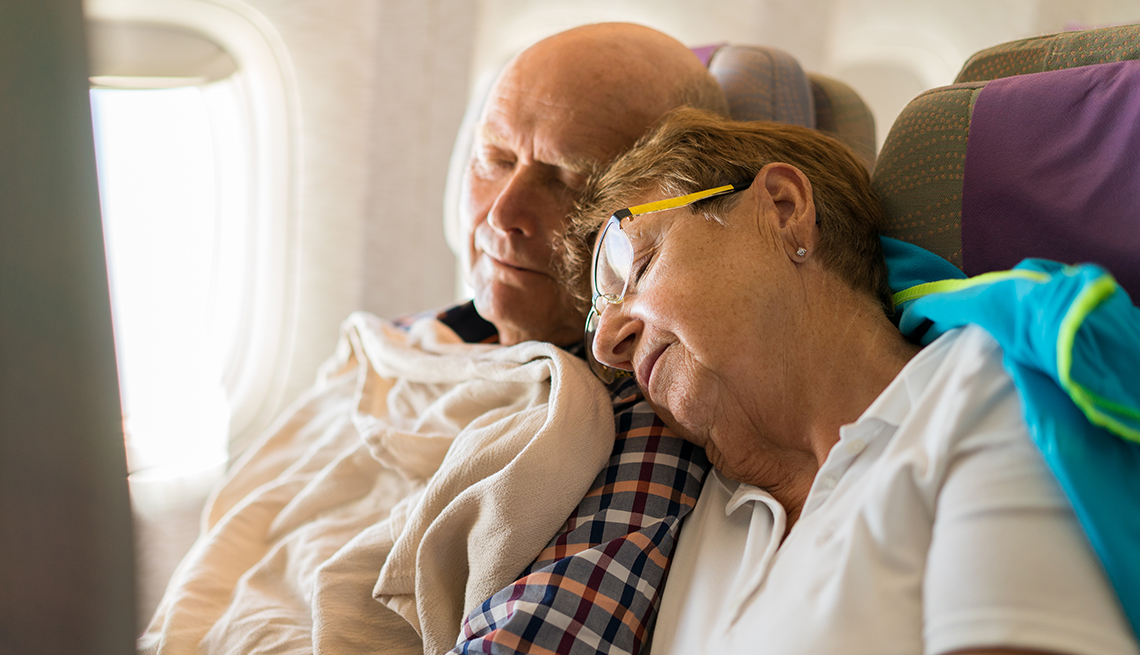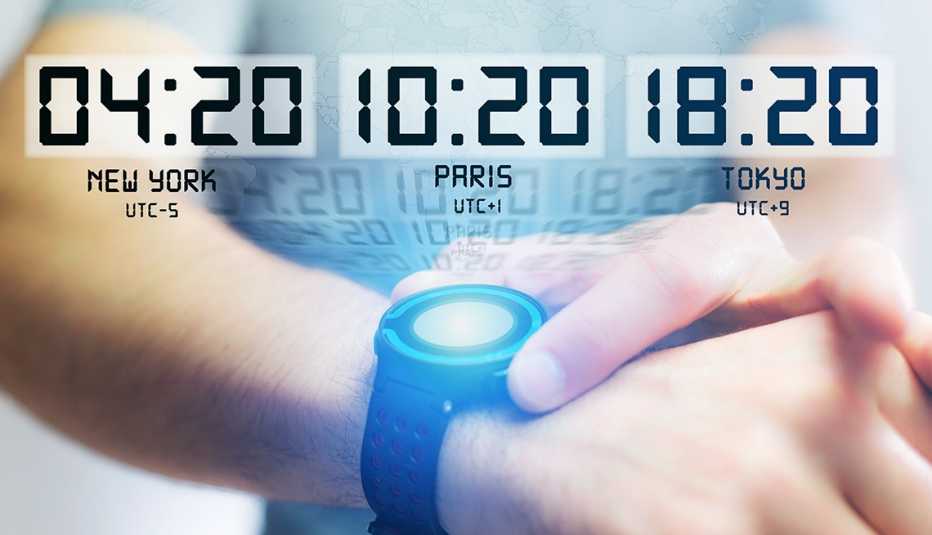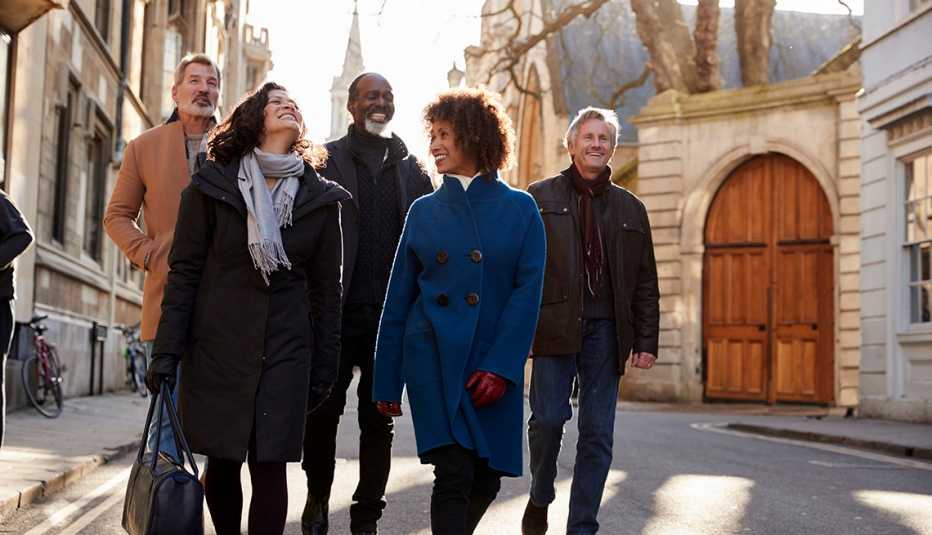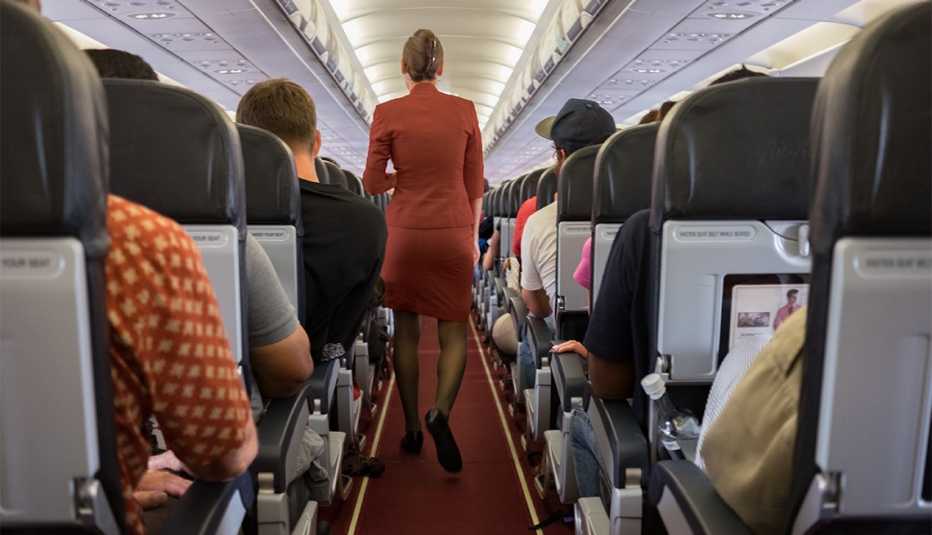AARP Hearing Center
When I returned to Virginia after a recent seven-day trip in California, I felt lethargic for a week. I was tired. I couldn’t concentrate. Napping sounded way more enticing than exercising. The problem was jet lag, which hits me much harder at age 52 than it did in my 30s.
Jet lag occurs when our body clock isn’t in tune with a destination’s light-dark cycle. And after age 50, our circadian cycle generally adjusts to new time zones more slowly than when we’re younger, according to sleep coach Bill Fish. “Our bodies are creatures of habit, and it is more difficult to deviate from those habits as we age,” says Fish, cofounder of Tuck, which offers information on sleep and sleep products. Typically, it takes about one day per time zone for your body clock to adjust. Jet lag is also more intense traveling east than west.
You can’t prevent jet lag, but you can ease the symptoms. Here’s some advice from sleep experts and frequent travelers.
BEFORE YOU GO
Book a red-eye. That way you’re more likely to have a normal night’s sleep. Another option: Book flights so you arrive at your destination in the evening, closer to bedtime.
Shift your internal clocks. Before you leave home, adjust your bed and meal times by one hour each night for each time zone you’ll be traveling. Schedule earlier times for eastward travel and later times for going west.





































































